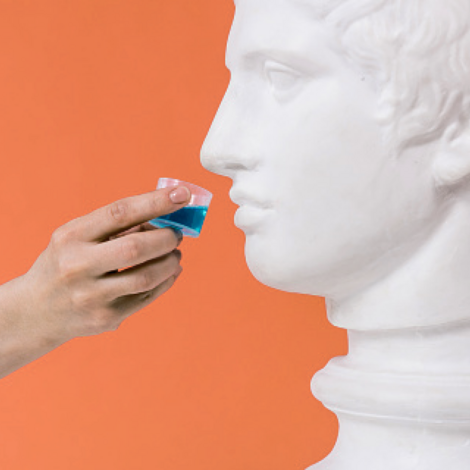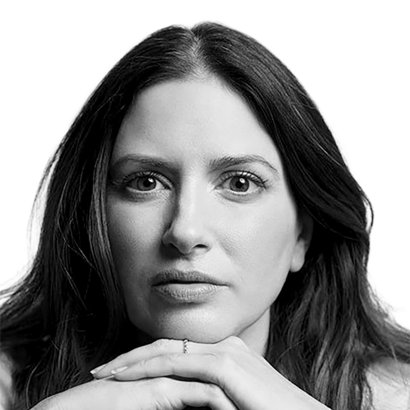Most people haven’t paid too much attention to their blood-sugar levels. But now, in wellness-obsessed enclaves such as Tribeca, Brentwood, and Notting Hill, it seems as if everyone is monitoring.
Glucose-measuring devices, and apps that interpret their data, have recently flooded the market, and many of the people who are buying them don’t have diabetes. The monitors resemble a nicotine patch fitted with a tiny needle; they take pinprick readings throughout the day, which are sent to a smartphone app that analyzes the data. Many users discover the connection between certain foods and blood-sugar spikes, leading them to make more healthful choices as a result.
Nutritionists are using that information to construct diets around blood-sugar control, with the aim of increasing energy and accelerating weight loss. Influencers, especially TikTok’s @bloodsugarking and Instagram’s @glucosegoddess, are preaching this to the masses. And now, Apple is reportedly working on adding glucose-measuring capabilities to its watch.
These continuous glucose monitors, which are F.D.A.-approved only for diagnosed diabetics, are smaller and more accurate than their predecessors. The main products are Abbott’s FreeStyle Libre and the G7 from Dexcom, which is fronted by Nick Jonas. (A new start-up called Zoe attempts to achieve an even broader understanding of how food affects the body by asking clients to use a continuous glucose monitor and take at-home finger-prick blood and stool tests.)
The apps deliver data about the quantity and duration of blood-sugar spikes. “This very short feedback loop is incredibly powerful,” says Lauren Kelley-Chew, M.D., head of clinical product for Levels, a start-up endorsed by Andrew Huberman, Ph.D., of Huberman Lab–podcast fame.
The loudest voice in this eco-system belongs to Jessie Inchauspé, the shaggy-haired biochemist known as @GlucoseGoddess. With 1.7 million followers on Instagram, a New York Times best-selling book (Glucose Revolution), and a how-to guide to reducing blood sugar on the way (The Glucose Goddess Method), she is known for her user-friendly charts, which reveal how certain foods and “hacks” (eating vegetables before a meal, for example) can stabilize blood sugar.
To improve overall health, “blood glucose is the most important place to start,” says Inchauspé. “If it’s out of whack, it will be really hard to thrive.”

Why, exactly, are glucose levels so important? When consumed, carbohydrates are broken down into simple sugars—glucose—in the blood. This triggers the pancreas to release insulin, which helps move glucose from the blood to the muscles and liver, where it’s used as energy. But when one’s diet is disproportionately carb-heavy, receptor cells can become resistant to insulin. At this point, glucose is converted to fat, which can cause weight gain. And that’s just the start: recent studies have linked insulin resistance to polycystic ovary syndrome, infertility, strokes, and depression.
“I was the weird girl in 2014 … showing up with a blood-sugar monitor on,” says Molly Maloof, M.D., who has been an adviser for Levels as well as Lumen, maker of another device that analyzes glucose. She was a health-optimization doctor in her early 30s, and her fasting blood sugar was around 100, the number at which doctors begin testing for prediabetes. Dr. Maloof, sufficiently spooked, strapped on a monitor and changed her behavior.
She learned that the gluten-free foods she was eating were “straight-up rice flour, which is basically powdered sugar,” she says. She taught a course at Stanford about the subject, which fueled her new book, The Spark Factor, about boosting energy by boosting metabolic health. “If you have blood-sugar issues,” says Dr. Maloof, “you have energy issues.”
Finer Dining
Most people focus on diet as a way to control their blood sugar, but stress and exercise also play a role. “It is extremely hard to lose weight when insulin is high,” says Dr. Kelley-Chew.
The least nuanced advice would be to eat fewer simple carbohydrates, but that would be like trying to lower your risk of a traffic accident by not getting into a car—effective but impractical. “The goal is to dose [carbs] in cadenced and in timed doses throughout the day,” says Clare Whitney, R.D.N., L.D.N., a nutritionist at the Sargent Choice Nutrition Center, at Boston University. “Health-promoting sources of carbs throughout the day give your body the energy it needs and prevent undereating and overeating.”
But cutting out entire food groups often backfires, and many foods that don’t contain carbohydrates— and don’t spike blood glucose—are unhealthy for other reasons. And, importantly, not all carbohydrates are created equal. “Low quality” carbohydrates come from refined grains and sugars, and “high quality” ones include fruit and whole grains.
The Glycemic Index (G.I.), a rating system from 0 to 100, with 100 being pure glucose, shows how quickly a carbohydrate affects blood glucose. “The lower the score, the slower your blood sugar rises after eating this food,” says nutritionist Isabel Smith, R.D.
“Research shows that appetite and hunger appear to be related to the rise and fall in blood glucose, particularly how fast it fell from the peak,” says Jennie Brand-Miller, director of the Glycemic Index Foundation, at the University of Sydney, in Australia.
“It is extremely hard to lose weight when insulin is high.”
One practical approach is to make half your carbohydrates low-G.I. (55 or less) and to include one low-G.I. food, such as berries, grapefruit, beans, whole grains, ancient grains, non-starchy vegetables, and proteins, at every meal. These slowly digested foods are also especially satiating.
Pairing a high-G.I. food with a low one “slows down the utilization of carbohydrates, so it’s a smoother and smaller rise of blood glucose,” says Whitney. Proteins, in particular, temper a high-G.I. meal. Nutritionists often recommend starting the day with a breakfast of protein or fiber, such as Inchauspé’s choice, an omelet with feta and tomatoes. Switching to a savory, protein-rich breakfast “can really transform people’s experience of a day,” she says. “You don’t have these crashes, and your energy is boundless.”
Whitney suggests eating within the first two hours of waking up and, from there, having a small meal or snack every three to four hours. Small, more frequent meals help stabilize glucose by moderating the speed of glucose digestion. Some experts also suggest paying attention to the order in which you eat certain foods. “If you don’t change anything about what you’re eating but just the order, you can really see a difference in energy levels and cravings and overall mood,” says Inchauspé. She recommends vegetables first, proteins and fats next, and, finally, starches and sugar. “Veggies contain fiber, and when you eat that at the beginning of a meal, it slows down the rate of food going from the stomach to the intestine,” Inchauspé says. “That protects the body from absorbing too much glucose too quickly from any of the foods coming down after.”’
In the name of science, I stuck the FreeStyle Libre 2 monitor onto my bicep and ate poached eggs on rye toast. My glucose hit 68, the low end of the normal range. After polishing off some gummy candies, the reading was 189. As tempted as I am to make this information prescriptive, the experts warned me against interpreting any single data point as gospel.
But the big picture is revealing enough to inspire me to pour myself a cocktail of apple-cider vinegar and water—a favorite hack among Inchauspé’s followers—before eating my next meal. It’s not exactly good, but it’s not as bad as you’d think.
Amy Keller Laird is a health-and-beauty journalist and the founder of Mental. She is the former editor of Women’s Health and beauty director of Allure





